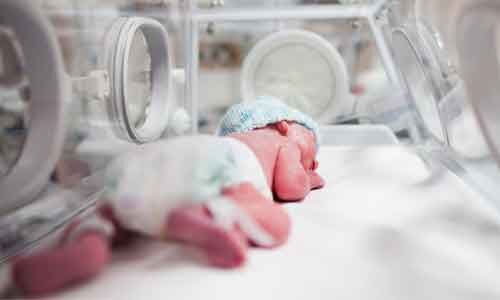- Home
- Medical news & Guidelines
- Anesthesiology
- Cardiology and CTVS
- Critical Care
- Dentistry
- Dermatology
- Diabetes and Endocrinology
- ENT
- Gastroenterology
- Medicine
- Nephrology
- Neurology
- Obstretics-Gynaecology
- Oncology
- Ophthalmology
- Orthopaedics
- Pediatrics-Neonatology
- Psychiatry
- Pulmonology
- Radiology
- Surgery
- Urology
- Laboratory Medicine
- Diet
- Nursing
- Paramedical
- Physiotherapy
- Health news
- Fact Check
- Bone Health Fact Check
- Brain Health Fact Check
- Cancer Related Fact Check
- Child Care Fact Check
- Dental and oral health fact check
- Diabetes and metabolic health fact check
- Diet and Nutrition Fact Check
- Eye and ENT Care Fact Check
- Fitness fact check
- Gut health fact check
- Heart health fact check
- Kidney health fact check
- Medical education fact check
- Men's health fact check
- Respiratory fact check
- Skin and hair care fact check
- Vaccine and Immunization fact check
- Women's health fact check
- AYUSH
- State News
- Andaman and Nicobar Islands
- Andhra Pradesh
- Arunachal Pradesh
- Assam
- Bihar
- Chandigarh
- Chattisgarh
- Dadra and Nagar Haveli
- Daman and Diu
- Delhi
- Goa
- Gujarat
- Haryana
- Himachal Pradesh
- Jammu & Kashmir
- Jharkhand
- Karnataka
- Kerala
- Ladakh
- Lakshadweep
- Madhya Pradesh
- Maharashtra
- Manipur
- Meghalaya
- Mizoram
- Nagaland
- Odisha
- Puducherry
- Punjab
- Rajasthan
- Sikkim
- Tamil Nadu
- Telangana
- Tripura
- Uttar Pradesh
- Uttrakhand
- West Bengal
- Medical Education
- Industry
Endoscopic septonasal flap technique effective in neonates with congenital choanal atresia

Multiple surgical approaches have been proposed to repair the congenital choanal atresia. However, there remains no general consensus about the optimal surgical technique. Therefore, it was found out that the endoscopic septonasal flap technique can effectively expose and expand the choanal bony structure for repair of congenital choanal atresia in neonates and infants.
The research is published in the Journal of Otolaryngology- Head and Neck Surgery.
Peng-peng Wang and associates from the Department of Otorhinolaryngology Head and Neck Surgery, National Center for Children's Health, Beijing Children's Hospital, Capital Medical University, People's Republic of China aimed to describe and evaluate outcomes of the endoscopic septonasal flap technique combined with bioabsorbable steroid-eluting stents for repair of congenital choanal atresia in neonates and infants.
Clinical data of 37 neonates and infants with congenital choanal atresia who received nasal endoscopic surgery with the flap technique were analyzed retrospectively. All patients were subjected to ultra low dose paranasal sinus computed tomography imaging preoperatively to confirm diagnosis and plan the surgery.
In the entire sample, the mirrored L-shaped flap technique was performed for bilateral atresia and the cross-over L-shaped flap technique was performed for unilateral atresia.
A total of 22 patients had silicone stents postoperatively and 15 patients had bioabsorbable steroid-eluting stents postoperatively. Silicone stents were removed at one month postoperatively under secondary general anesthesia, while no anesthesia was needed to remove the bioabsorbable steroid-eluting stents. Postoperative follow-up ranged from 10 months to 3 years.
The following findings were observed-
a. The septonasal flap technique was performed in all patients.
b. Compared with the silicone stents group, the average operative duration and the hospital length of stay in the bioabsorbable steroid-eluting stents group were decreased, the average number of procedures was reduced, the differences were statistically significant.
c. There were no reports of postoperative restenosis and complications in the bioabsorbable steroid-eluting stents group, and follow-up endoscopic examinations showed patency and stable nasal passages in all cases.
As a result, it was concluded that "the endoscopic septonasal flap technique can effectively expose and expand the choanal bony structure for repair of congenital choanal atresia in neonates and infants."
They further inferred that the combined use of this technique along with bioabsorbable steroid-eluting stents can help prevent the need for revision procedures and also against stent-related injuries.
Wang, Pp., Tang, Lx., Zhang, J. et al. Combination of the endoscopic septonasal flap technique and bioabsorbable steroid-eluting stents for repair of congenital choanal atresia in neonates and infants: a retrospective study. J of Otolaryngol - Head & Neck Surg 50, 51 (2021). https://doi.org/10.1186/s40463-021-00535-9
Dr. Nandita Mohan is a practicing pediatric dentist with more than 5 years of clinical work experience. Along with this, she is equally interested in keeping herself up to date about the latest developments in the field of medicine and dentistry which is the driving force for her to be in association with Medical Dialogues. She also has her name attached with many publications; both national and international. She has pursued her BDS from Rajiv Gandhi University of Health Sciences, Bangalore and later went to enter her dream specialty (MDS) in the Department of Pedodontics and Preventive Dentistry from Pt. B.D. Sharma University of Health Sciences. Through all the years of experience, her core interest in learning something new has never stopped. She can be contacted at editorial@medicaldialogues.in. Contact no. 011-43720751
Dr Kamal Kant Kohli-MBBS, DTCD- a chest specialist with more than 30 years of practice and a flair for writing clinical articles, Dr Kamal Kant Kohli joined Medical Dialogues as a Chief Editor of Medical News. Besides writing articles, as an editor, he proofreads and verifies all the medical content published on Medical Dialogues including those coming from journals, studies,medical conferences,guidelines etc. Email: drkohli@medicaldialogues.in. Contact no. 011-43720751


